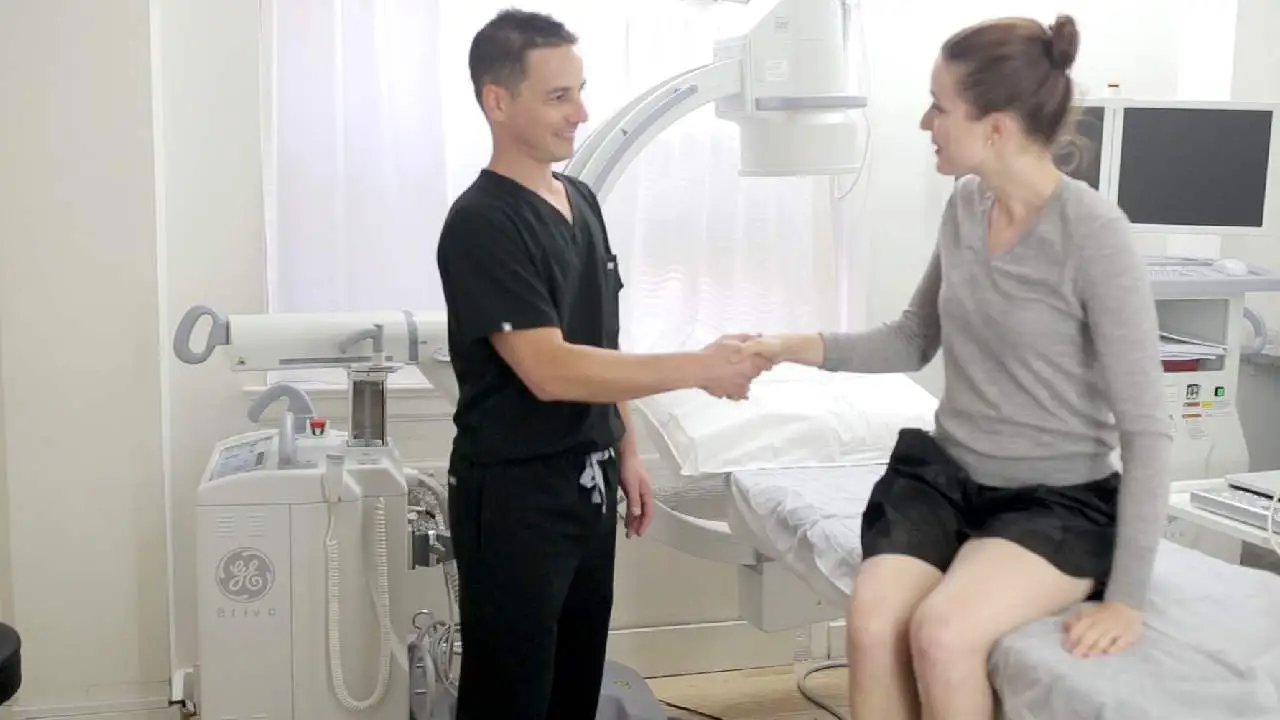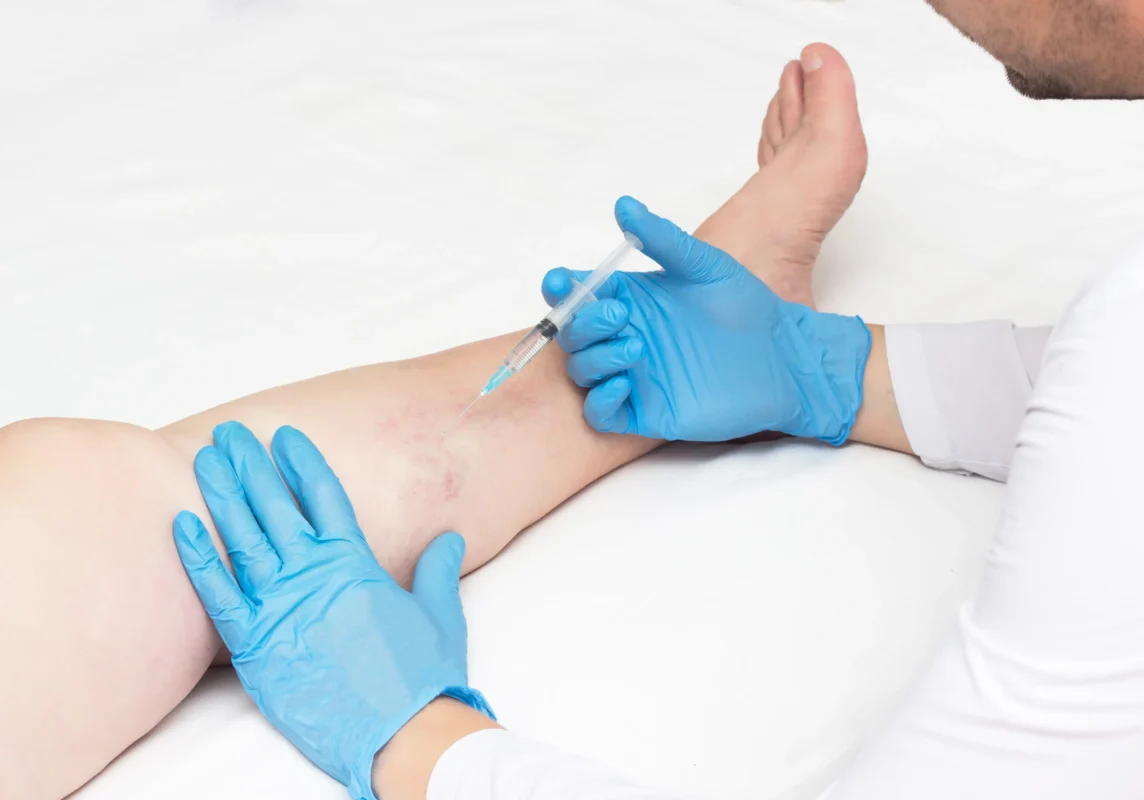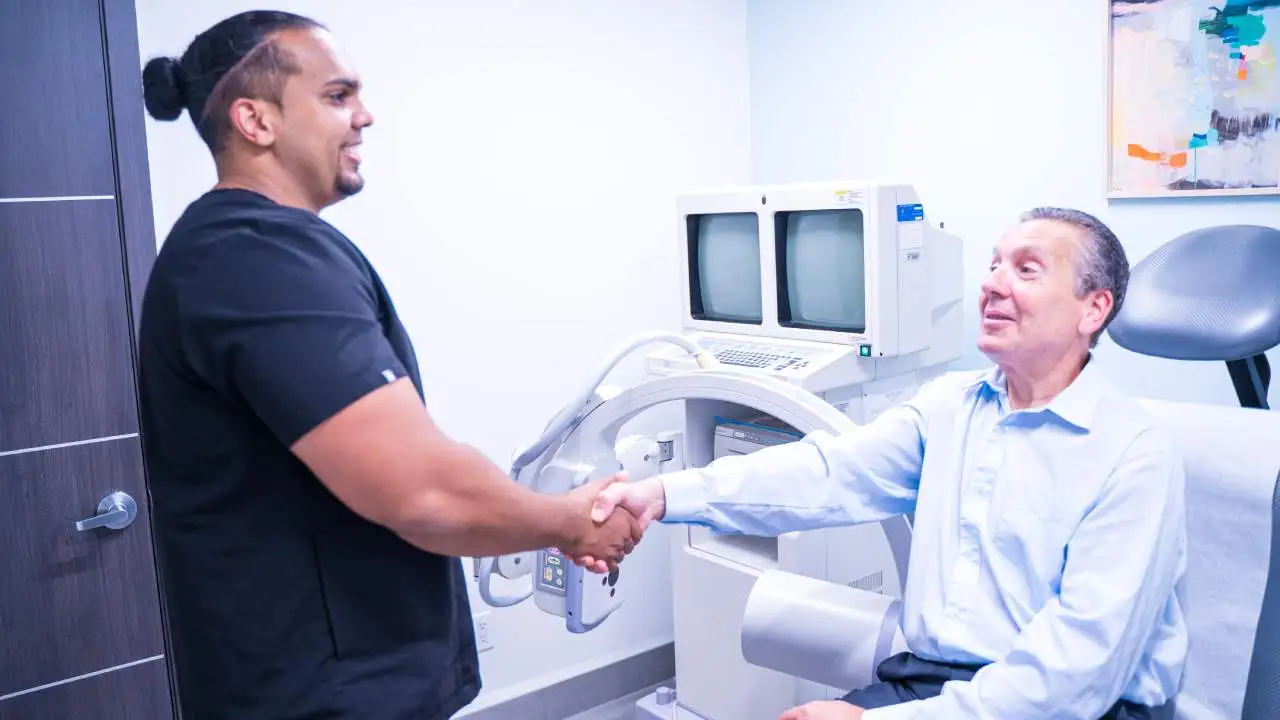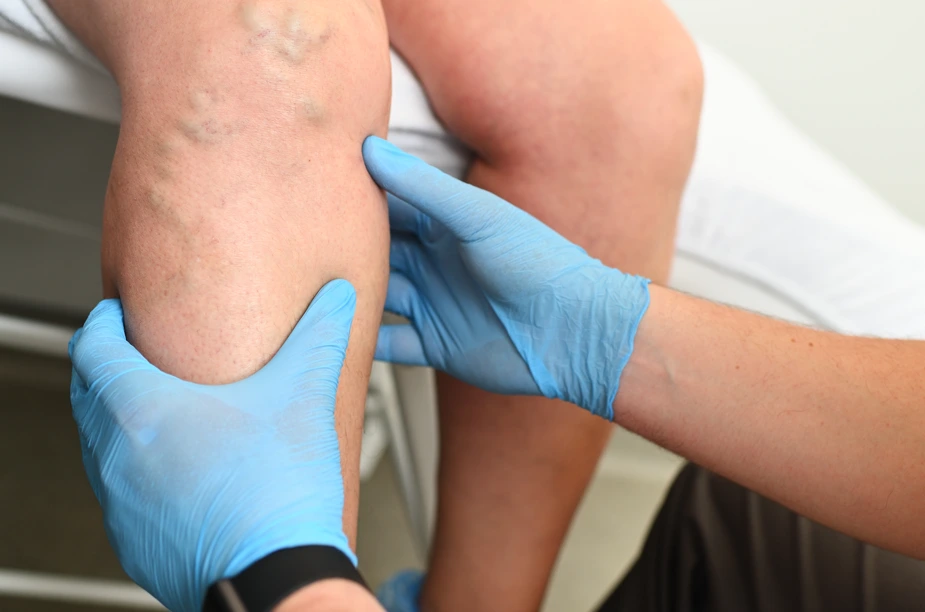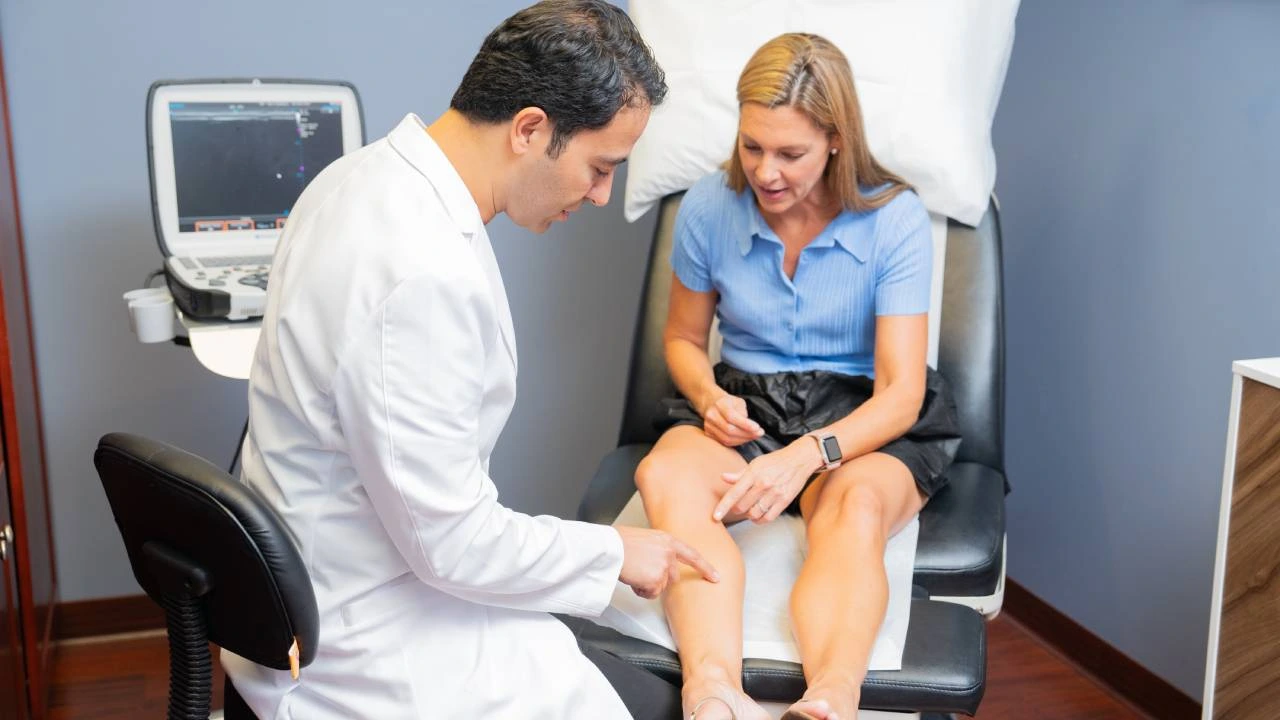What is the varicose vein ablation procedure?
A varicose vein ablation is a group of minimally invasive treatments that heat (ablate) and destroy the diseased saphenous veins responsible for your vein problems. Vein ablation is the most effective minimally invasive treatment for chronic venous insufficiency, the root cause of spider veins, varicose veins, and most other vein problems. The varicose vein ablation procedure involves inserting a specialized catheter into the diseased vein to channel thermal or laser energy, which destroys the diseased vein responsible for your vein problems.

Varicose vein ablation is a minimally invasive and in-office procedure. It usually concludes within an hour, causes little to no pain and discomfort, involves a negligible risk of complications, and doesn’t involve any downtime. After the procedure, you can resume most of your daily activities and work immediately — with no harsh side effects or complications. Vein ablation also has a nearly perfect (97%) success rate and a negligible risk of vein disease recurrence. After vein ablation, you don’t have to worry about the same varicose veins returning.
Please schedule an appointment to explore your varicose vein treatment options.
How does varicose vein ablation work?
To understand how varicose vein ablation works, you need to better understand the root cause of varicose veins — chronic venous insufficiency.
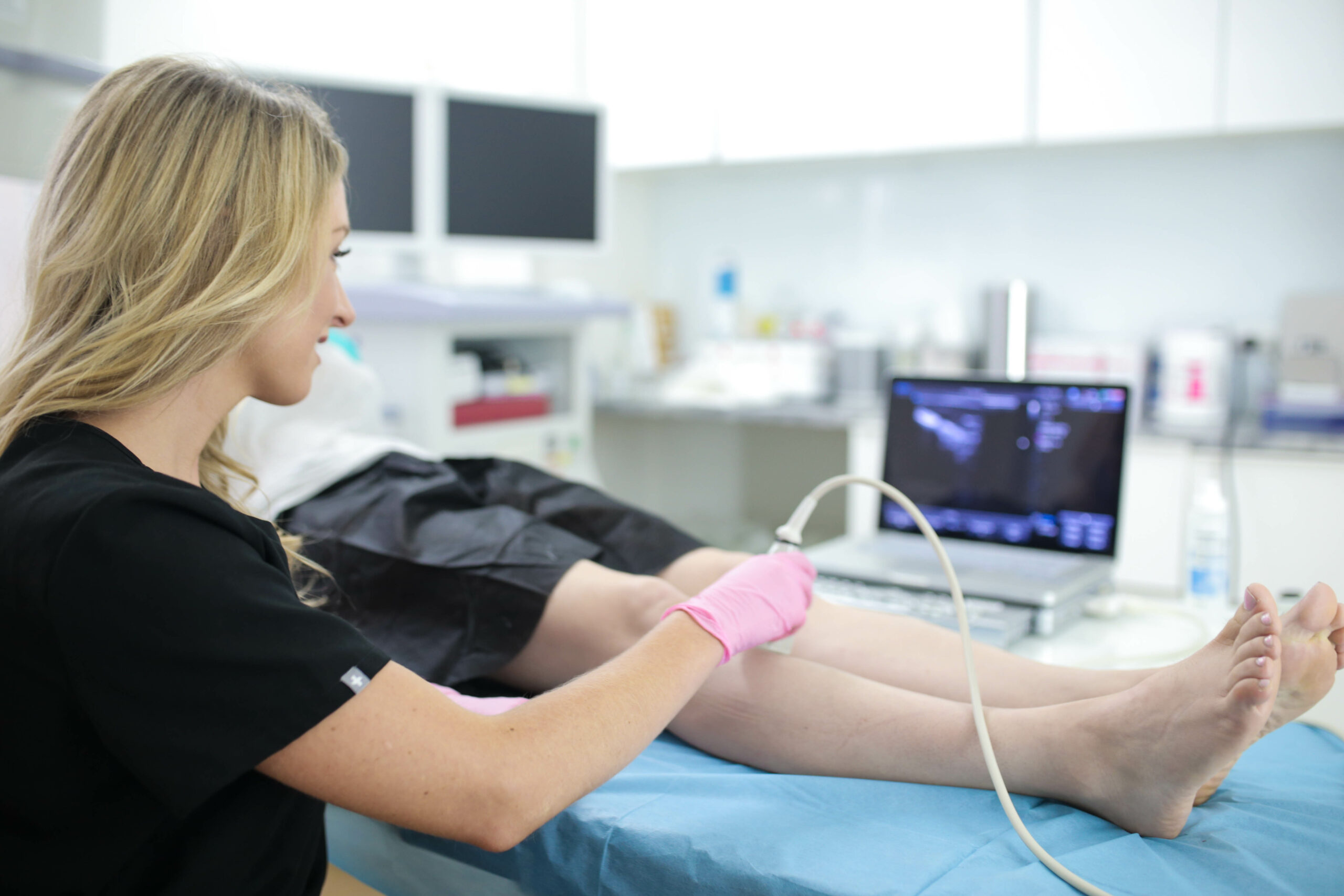
Chronic venous insufficiency is the circulatory disorder responsible for most vein problems. Healthy veins contain valves that ensure smooth one-way blood circulation to the heart, often against the force of gravity. Venous insufficiency is a condition wherein the vein valves collapse or malfunction, causing blood to flow backward and accumulate in the leg veins. The continued accumulation of blood in leg veins leads to vascular dilation and the eventual formation of spider veins and varicose veins.
Vein ablation is a minimally invasive procedure for chronic venous insufficiency, the root cause of varicose veins. The vein doctor administers local anesthesia and makes a small incision on the skin’s surface, through which a catheter is carefully driven into the diseased saphenous vein (under ultrasound guidance). Once the catheter is lodged in place, the vein doctor injects tumescent anesthesia to ensure comfort. Finally, the catheter is activated to generate thermal energy, which destroys the diseased saphenous vein responsible for your vein problems. The accumulated blood reroutes into healthier leg veins.
Since vein ablation targets the root cause of varicose veins, it prevents the formation of new spider veins and varicose veins. After the vein ablation procedure, the vein doctor can perform an ambulatory phlebectomy to remove the superficial varicose veins from the skin’s surface.
Types of varicose vein ablation procedures:
Radiofrequency Ablation
Radiofrequency ablation is a minimally invasive procedure that involves using radiofrequency energy to destroy the diseased vein. The vein doctor inserts a catheter and generates radiofrequency waves, which converts into thermal energy and burns the diseased vein. This is one of the safest and least painful treatments for chronic venous insufficiency.
Laser Ablation
Endovenous laser ablation was first pioneered in 2003 — this is the world’s first minimally invasive treatment for chronic venous insufficiency. Instead of channeling radiofrequency energy, the vein doctor uses a specialized laser fiber to generate laser energy. Laser ablation produces the same results as radiofrequency ablation, but it causes a little more post-treatment discomfort.
How long does vein ablation take?
Vein ablation is an extremely quick and efficient treatment. The entire in-office vein ablation procedure concludes within 30 to 60 minutes, following which you can resume your daily activities and work. Vein ablation is the perfect lunchtime procedure because it can fit within your lunch break, following which you can resume your work and daily activities. You don’t need to take any time off work.
What are the benefits of varicose vein ablation?
Varicose vein ablation is one of the most effective and reliable minimally invasive vein treatments. Until recently, vein disease could only be treated via complex surgical procedures, such as vein ligation, vein stripping, and venous bypass surgery. Vascular surgeries involve hospitalization, extended downtime, and a higher risk of complications, such as infections and deep vein thrombosis. Furthermore, varicose vein surgery has a lower success rate than minimally invasive procedures and a higher rate of vein disease recurrence.
The following are the primary benefits of vein ablation (compared to vein surgery):
- Minimally Invasive: Vein ablation is a minimally invasive procedure — there are no major excisions, general anesthesia, hospitalization, or open surgery.
- Comfortable: Vein ablation is performed under local anesthesia, so it causes minimal discomfort during and after the treatment.
- Minimal Side Effects: Vein ablation involves minimal post-treatment side effects, such as redness, swelling, tenderness, and mild discomfort.
- Negligible Risks: Vein ablation is an extremely safe procedure with minimal risks. The risk of infections and deep vein thrombosis is negligible.
- No Recurrence: Vein ablation has a significantly lower risk of vein disease recurrence than traditional varicose vein surgeries.
- Efficient: Vein ablation concludes within an hour and involves no downtime, making it an extremely efficient lunchtime procedure.
- No Downtime: Vein ablation doesn’t involve any downtime — you can resume most of your daily activities and work immediately after the treatment.
What are the side effects of varicose vein ablation?
The primary side effects of vein ablation include mild redness, swelling, tenderness, and bruising around the treatment sites. Some patients also notice mild skin discoloration, and there’s a small risk of nerve injuries because of the thermal energy. But most of the side effects are mild and temporary, and you can resume your daily activities immediately. This is the safest and most reliable minimally invasive vein treatment available.


